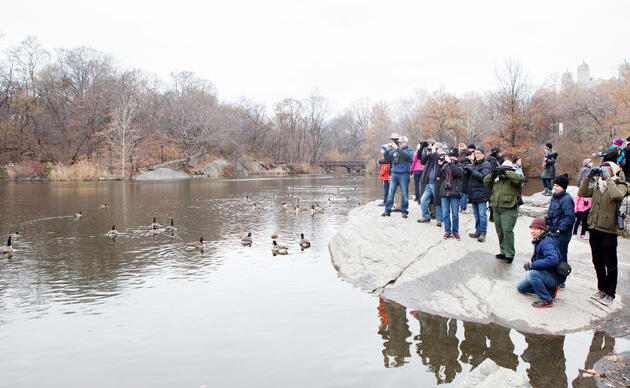Description/Natural History
The peregrine falcon has long been considered the embodiment of speed and power. They are crow sized birds, but more stream-lined in shape. Mature peregrines are characterized by blackish "helmets" and "mustaches". They are uniformly dark grey on their backs and tails. Their undersides range from buff to almost white, typically with prominent barring across the chest and belly. Juvenile pregrines show similar patterns, but their coloration is distinctly brown rather than grey.
Mature plumage is usually obtained during the birds second summer, as part of the molting process. Birds going through this process show a combination of juvenile and adult plumage. Females are larger than males, and tend to have darker, and more pronounced coloration on their underparts.
The accompanying photo shows an immature peregrine, taken several weeks after she left the nest. Photos of specific birds associated with the Fargo nest site can be found throughout this website.
Peregrines are avian predators, and feed almost exclusively on other birds. Most of their prey is caught on the wing. Peregrine falcons diving at prey have been clocked at speeds in excess of 200 mph, making them among the fastest animal on earth. They are superlative flyers, capable of remarkable agility as well as speed.
The peregrine falcon is the most widely distributed bird of prey in the world, with races nesting on every continent except Antarctica. Three races occur naturally in North America. Despite their wide distribution, however, peregrines are very rare almost every place where they are found.
Tundra peregrines nest in Greenland and across the arctic and sub-arctic regions of Canada and Alaska. In the winter, members of this highly migratory race travel south to the Carribean, Mexico, Central and South America. Some birds winter as far south as Argentina and Chile. Tundra peregrines are occasionally seen in Fargo during their seasonal migrations.
Peale’s peregrines are non-migratory inhabitants of the coasts of British Columbia and southeastern Alaska. This is one of the largest and most darkly plumed races of peregrine falcon.
The anatum race or subspecies once nested across much of the mid-portion of the North American continent. In North Dakota the anatum peregrine historically nested in small numbers in the Badlands. There are indications that they may have also nested in the Turtle Mountains. Finally, there is a credible report that a pair of these birds attempted to nest on the state capitol building in 1947 and 1948.
Following World War II, populations of peregrine falcons (and many other raptors) were decimated by the wide-spread use of the pesticide DDT. This persistent chemical accumulated in the falcons’ body tissue, causing females to produce sterile or thin-shelled eggs. The eggs broke easily during incubation, and few chicks hatched. The anatum race was particularly hard hit. The last known breeding in North Dakota occurred in 1954. By 1970, the peregrine falcon had been essentially eliminated as a breeding species south of the arctic regions and east of the Rocky Mountains.
Due to restrictions on the use of DDT, and to intensive captive breeding and reintroduction programs across the United States and Canada, the peregrine falcon has made a remarkable comeback. Peregrines have been returned to much of their natural range, and have reclaimed many historic breeding sites. They have also become established in many urban environments such as downtown Fargo.
Peregrine falcons are relatively long lived. They have been know to live for almost twenty years in the wild, and even longer in captivity. Typically they do not begin to breed until their second summer. Breeding pairs are highly territorial, and will usually return to the same nest site year after year. If one of the birds is lost or fails to return, the survivor will often attract a new mate. As a result, nest sites can remain occupied for extended periods of time.
The usual clutch size is three or four eggs. At this latitude egg laying typically occurs in April, and the incubation period is approximately thirty-three days. Young leave the nest between five and six weeks following hatching, but they continue to be dependent on their parents for food. Over the next weeks the young birds become increasingly self reliant and independent. Ultimately, they wander off in search of territories of their own. This natural tendency to prospect for an available nest site is one reason the peregrine falcon is now re-established across much of its former range, often in locations where they did not naturally occur.
Based on the success of the recovery efforts, the peregrine falcon was recently removed from the federal endangered species list. It is still strictly protected, however, by a variety of state and federal laws, as well as international treaties.
How you can help, right now
Support Rowe Sanctuary
Help us continue our important work for Sandhill Cranes and other birds that rely on the Platte River ecosystem!
Support Spring Creek Prairie
We are able to provide and protect this amazing landscape only with the help of private donations. Help us keep the trails open and the prairie thriving!
Support Audubon in the Great Plains
Support our work with local landowners, urban woods and prairies, and education programs in Nebraska and the Dakotas!




